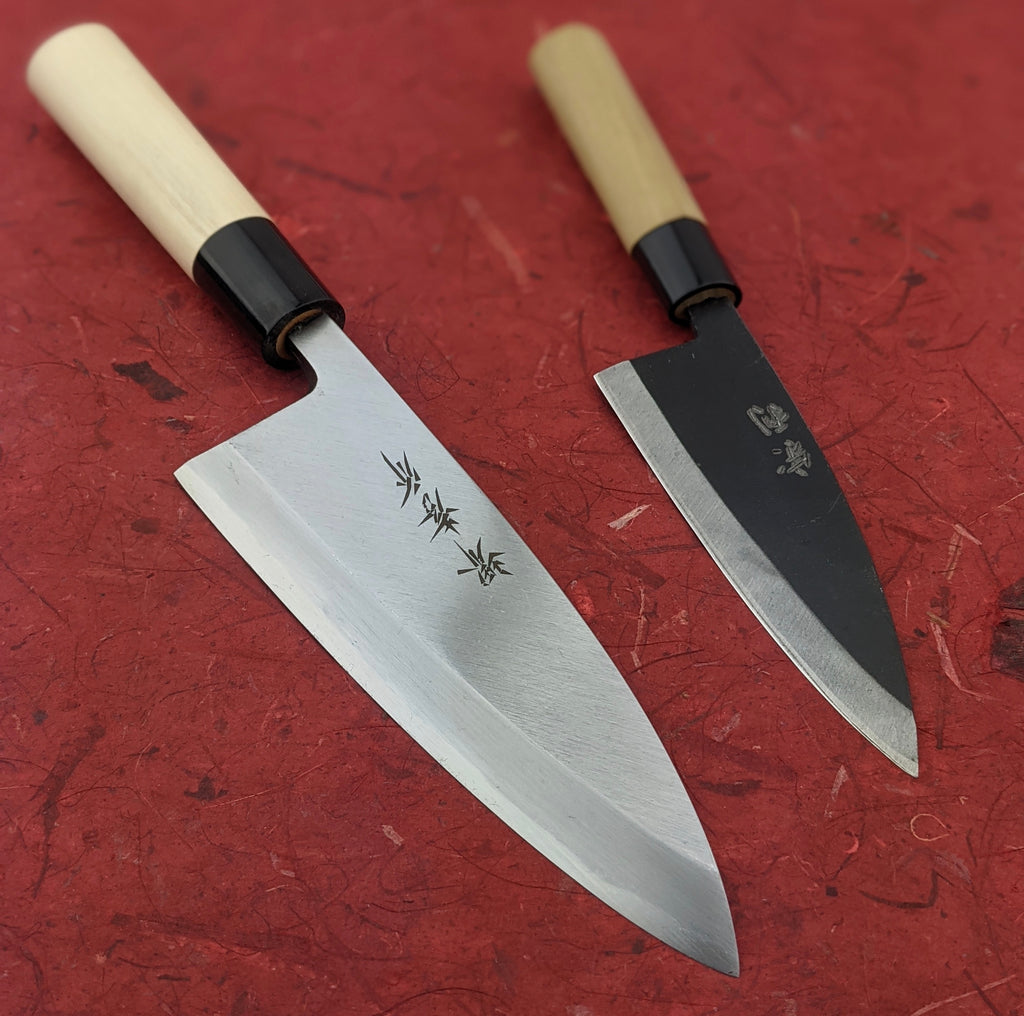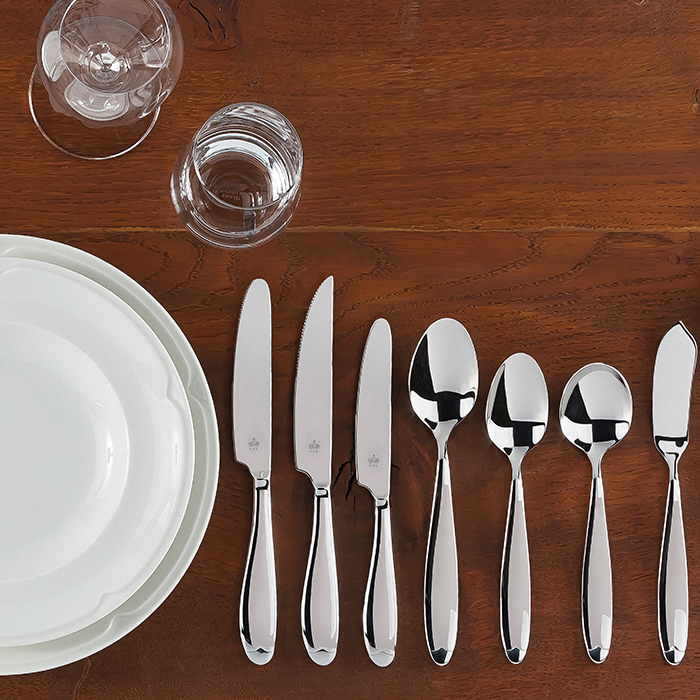Protective sheaths that make a fish knife safer to use
The Ultimate Guide to Maintaining Your Fish Knife for Durability and Performance
Maintaining a fish knife is necessary for guaranteeing its longevity and optimum performance. Correct treatment involves a series of actions, consisting of cleansing, sharpening, and storage space. Each phase adds to the knife's performance during usage. Comprehending these methods can make a substantial distinction in the life-span of this vital device. Many customers ignore crucial elements of maintenance that can lead to degeneration. What are these often-forgotten steps?
Selecting the Right Fish Knife for Your Demands
When choosing the suitable fish knife, what trick functions should one consider? The blade's flexibility is vital, permitting precision while filleting different fish varieties (fish knife). A thin, slim blade often improves ability to move, making it simpler to navigate around bones and skin. The material of the blade likewise plays a crucial function; stainless steel uses resilience and corrosion resistance, essential for regular direct exposure to water
Furthermore, the deal with's design should not be overlooked. It needs to offer a comfy grasp, ideally featuring non-slip products that guarantee safety and security during usage. The knife's length is an additional aspect; shorter blades can supply far better control, while longer blades might be beneficial for larger fish. Weight is crucial; a well-balanced knife enables for extended usage without fatigue. By meticulously considering these functions, one can choose a fish knife that satisfies particular needs for reliable fish prep work.
Proper Cleaning Techniques After Each Use
Correct cleaning techniques after each use are crucial for maintaining the durability and performance of a fish knife. Quickly after filleting fish, it is critical to rinse the knife under cozy water to eliminate scales, sludge, and any kind of recurring fish juices. Making use of a soft sponge or cloth, the user must delicately scrub the blade and handle, paying special interest to any type of crevices where debris might collect. Avoid making use of abrasive materials that might damage the blade's surface. After cleaning, the knife needs to be thoroughly dried with a tidy towel to avoid moisture-related damages. If the knife has a wood deal with, applying a food-safe mineral oil occasionally can assist maintain its integrity. Storing the knife in an assigned sheath or magnetic strip can further secure it from unexpected damages and ensure it stays prepared and tidy for future use. Consistent adherence to these cleansing techniques will boost the knife's life-span and effectiveness.
Developing Your Fish Knife: Devices and Approaches
Sharpening a fish knife is a vital process that enhances its performance and guarantees tidy cuts while filleting. To attain optimum intensity, a number of devices can be employed. A whetstone is considered among the most effective techniques, enabling specific control over the honing angle. Individuals need to wet the rock and preserve a regular 20-degree angle while gliding the blade across its surface.
A developing rod can be made use of for routine maintenance, realigning the blade's edge without getting rid of material. For benefit, electric sharpeners provide a quick option, though they may not offer the same degree of skill as manual methods.
No matter of the selected technique, it is important to do with a natural leather strop to polish the side, making certain a knifelike finish. Routine honing not only extends the life of the fish knife however additionally enhances the overall performance of the filleting process.
Saving Your Fish Knife for Optimum Security
After developing a fish knife, interest should transform to its storage space to preserve the blade's integrity and performance. Appropriate storage is important for preventing dulling, corrosion, and damage. Preferably, a fish knife must be kept in a safety sheath or knife roll, which shields the blade from call with environmental elements and other utensils (fish knife). Magnetic strips can also be reliable, permitting easily accessible and safe storage while keeping the blade secure

Routine Maintenance Routines to Comply With
A constant upkeep routine is vital for maintaining the capability and appearance of a fish knife. Routine cleansing after each use is critical; rinsing the blade with warm water and moderate soap removes any type of residue. It is a good idea to dry out the knife thoroughly to stop Full Article corrosion. Periodically, a light application of food-safe mineral oil can assist shield the blade and keep its luster.

Saving the fish knife in a protective instance or sheath protects against unintended damages and keeps it ready for use. Adhering to these maintenance routines will considerably improve the durability and efficiency of the fish knife.
Often Asked Concerns
Can I Use My Fish Knife for Various Other Kinds Of Fish?
Yes, a fish knife can be used for other kinds of fish. Nevertheless, the performance might vary depending upon the knife's layout and the details fish being refined, affecting performance and precision during preparation.
What Products Are Finest for a Fish Knife Blade?
Stainless-steel and high-carbon steel are considered check my reference the very best products for a fish knife blade. Stainless steel provides deterioration resistance, while high-carbon steel offers superior sharpness and edge retention, important for efficient fish preparation.
How Frequently Should I Change My Fish Knife?
A fish knife ought to usually be changed every 3 to five years, relying on usage and maintenance. Regular assessment for indicators of wear or damage can likewise assist determine the appropriate time for replacement.
Are There Particular Brands Known for Top Quality Fish Blades?
Particular brands, like Wüsthof, Victorinox, and Rapala, are renowned for generating premium fish blades. These brands are recognized for their sturdiness, sharpness, and ergonomic styles, making them favored choices among angling fanatics and specialists alike.
Can Temperature Affect My Fish Knife's Efficiency?
Temperature can dramatically impact a fish knife's efficiency. Severe heat may create blade products to warp, while cold problems can cause brittleness. Keeping an optimal temperature is necessary for preserving the knife's functionality and sturdiness.
The knife's length is another aspect; much shorter blades can use far better control, while longer blades may be helpful for bigger fish. Quickly after filleting fish, it is essential to rinse the knife under warm water to get rid Read Full Report of scales, scum, and any type of recurring fish juices. After honing a fish knife, attention needs to transform to its storage space to keep the blade's integrity and efficiency. Ideally, a fish knife must be kept in a safety sheath or knife roll, which shields the blade from call with various other tools and environmental variables. Yes, a fish knife can be utilized for other types of fish.